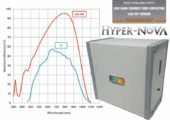P. Lakshmi Madhuri, Saranya Bhupathi, S. Shuddhodana, Zaher M. A. Judeh, Sheng-Hsiung Yang, Yi Long, and Ibrahim Abdulhalim
Abstract
Smart windows based on VO2 can control the infrared radiation entering the building based on the temperature, however, the visible part of the spectrum is not controlled. Liquid crystal (LC) based privacy windows, on the other hand, control the visibility either with temperature or applied voltage, however, the total transparency remains fixed as the scattering is mainly in the forward direction. To be able to control both the visibility and the temperature in the house, here we combine both layers in which the LC layer is made of a composite of nanoporous organic microparticles called Cochleates at small concentrations embedded in the LC matrix, thus acting as a tunable scattering metamaterial. The VO2-LC interface has less Fresnel reflectivity and therefore higher solar modulation is expected in an optimized window. In addition, being hidden under the LC layer, VO2 will be protected from oxidation. Electro-optic and thermo-optic properties of the device are investigated including the response time measurements. A non-reciprocity effect is observed showing better performance when the VO2 layer is facing the outside world, in which the window becomes more transparent from inside than from outside and also showing higher solar modulation. Response time is 1 ms for the rise and 10 ms fall time at 70 V. This approach opens up a new possibility of thermochromic VO2 and LC-based systems to satisfy the real-life requirements on smart window applications.





